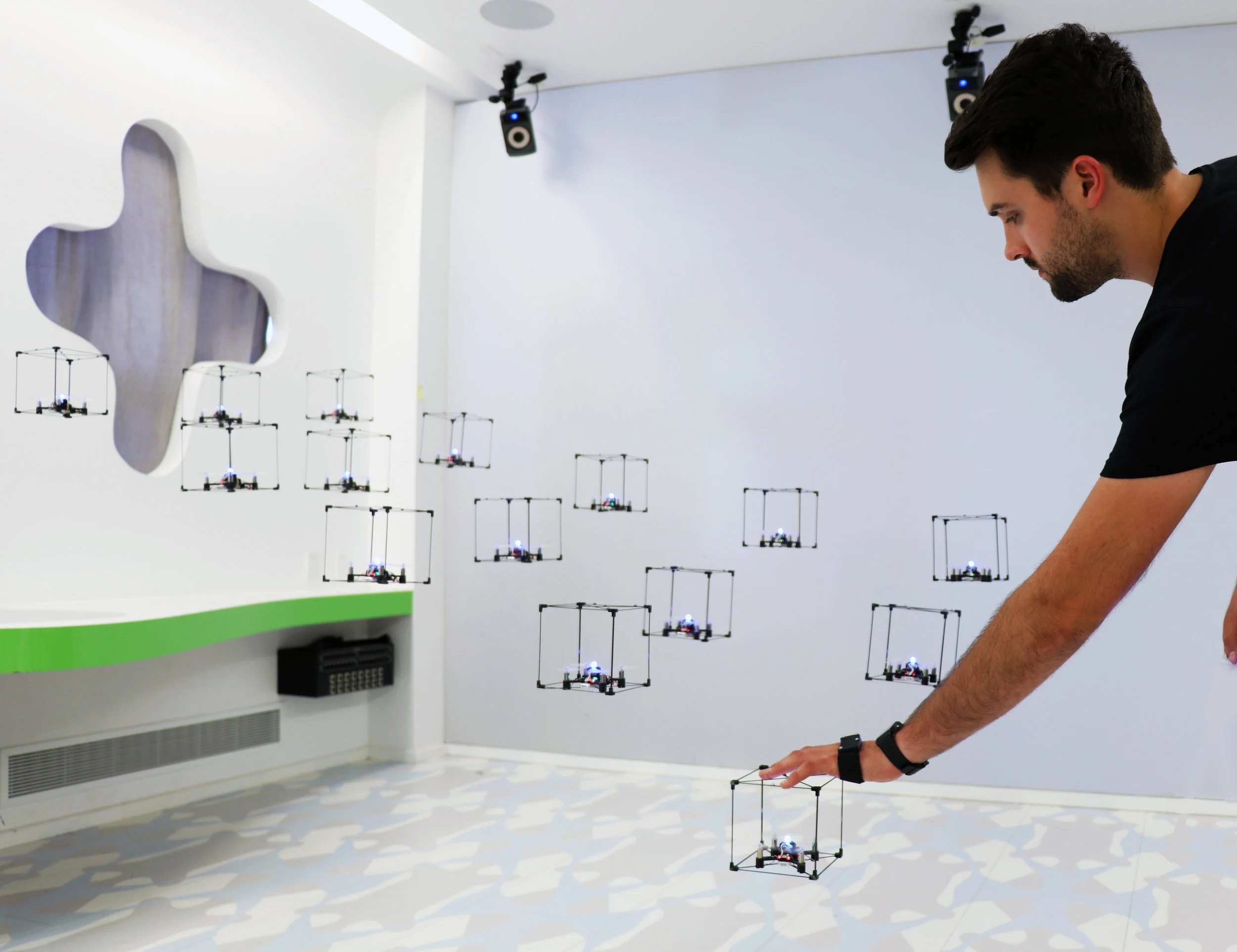Queen’s University’s Human Media Lab unveils world’s first interactive physical 3D graphics
Berlin – October 15th. The Human Media Lab at Queen’s University in Canada will be unveiling GridDrones, a new kind of computer graphics system that allows users to physically sculpt in 3D with physical pixels. Unlike in Minecraft, every 3D pixel is real, and can be touched by the user. A successor to BitDrones and the Flying LEGO exhibit – which allowed children to control a 3D swarm of drone pixels using a remote control – GridDrones allows users to physically touch each drone, dragging them out of a two-dimensional grid to create physical 3D models. 3D pixels can be given a spatial relationship using a smartphone app. This tells them how far they need to move when a neighbouring drone is pulled upwards or downwards by the user. As the user pulls and pushes pixels up and down, they can sculpt terrains, architectural models, and even physical animations. The result is one of the first functional forms of programmable matter.
Read More


